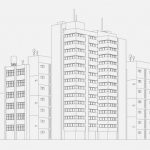The following considerations are to be taken care of and observed:
· Determination of extent, location and width of cracks
· Classification of cracks as structural and non-structural
Dormant cracks:
Dormant cracks are caused by some event in the part, which is not expected to recur. They remain constant in width, and may be repaired by filling then with a rigid material.
Active cracks:
Do not remain constant in width, but open and close as the structure in loaded, or due to thermal and hydras changes in the concrete.
Growth cracks:
Increase in width becomes the original reason for their occurrence persists.
5 Applications:
The repair of cracks can be achieved with the following techniques:
· Resin injection
· Routing and Sealing
· Stitching
· External stressing
· Bonding
· Blanketing
· Overlays
· Dry pack
· Vacuum impregnation
· Polymer impregnation
6 Rehabilitations
The success of repair activity depends on the identification of the root cause of the deterioration of the concrete structures. The repairs can be done for the improvement of strength and durability, thus extending the life of the structure, is not difficult to achieve.
It is the processes of restoring the structure to service level, once it had and now lost, strengthening consists in endowing the structure with a service level, higher than that initially planned by modifying the structure not necessarily damaged area.
The following steps are generally used in the rehabilitation of distressed concrete structure:
· Support the structural members properly as required.
· Remove all cracked, spalled and loose concrete.
· Clean the exposed concrete surfaces and steel reinforcement
· Provide additional reinforcing bars, if the loss in reinforcement is more than 10%
· Apply protective coatings over the exposed/repaired surface.


Comments are closed